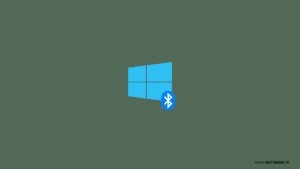
USB drives are so outdated these days that you rarely see them. Pretty much everyone uses an external hard disk for transferring data and other stuff. To keep things very organized, clean, and use multiple partitions, you can partition an external hard disk.
In this article, we are going to show you how to partition an external hard disk in Windows 10. There are two stages of doing it so follow the steps given.
Partitioning an external hard disk might even be important for some people if they want to use it in two different formats, for others it will just help in reorganizing things better.
Partition an External Hard Disk in Windows 10
Stage 1: Formatting the External Hard Disk
To partition an external hard disk, you will have to format your hard disk first. so if it has some data, create a backup for it.
Step 1: Connect your external hard disk.
Step 2: Now, go to the File Explorer and you will see your external hard disk, right-click on it and select ‘Format’.
Step 3: You will have to choose a format that will be under the ‘File system’ drop-down menu, click on the arrow pointing downwards, and select your preferred format. Windows default format is ‘NTFS’ but if you want to use the hard disk with a Max, then you should select ‘exFAT’.

Step 4: Check the ‘Quick Format’ box under ‘Format options’, and click on ‘Start’.
That’s it, just click on OK when the Format Complete pop-up appears, and you are all set with formatting the external hard disk.
Stage 2: Creating Partition in the External Hard Disk
Step 1: Go to the Windows search box and type, “diskmgmt.msc”, and press enter.
Step 2: In the Disk Management menu, you will find your external hard disk, right-click on it, and select ‘Shrink Volume’. Now if you have formatted your external hard disk in exFAT format, you might not see the ‘Shrink Volume’ option, so go to Stage 1 and select ‘NTFS’ format in step 3.

Step 3: Now enter the amount you want to shrink your volume by, this would be the size that you want in the new partition. The size will be entered in megabytes(MB) so make sure what size you want to allocate in the shrink volume.

Step 4: Click on ‘Shrink’. Now you will have one unallocated space that will be the new partition.
Step 5: Select your external hard disk, and right-click on the unallocated space. Then click on ‘New Simple Volume’.

Step 6: Now you will see the New Simple Volume Wizard, click on ‘Next’.

Step 7: You will have to decide how big your partition space will be, if you want to use all of the space, just type the maximum disk space that is shown at the top in the ‘Simple volume size in MB’ column, click on ‘Next’.

Step 8: Now you have to choose a letter that you want to assign to the new partition. Choose a letter and click on ‘Next’.

Step 9: Now you can select the format type under ‘File system’. The default will be NTFS, but if you want to use this partition space in a Mac, you should be selecting exFAT from the drop-down menu. You can also label your drive if you want.
Step 10: Make sure that you check the ‘Perform a quick format’ option from the menu. Click on ‘Next’

Now just click on ‘Finish’ and if you see a pop-up telling you to format the disk, click on ‘Format disk’ and that will be it. The new partition will be created on your external hard disk.

So that was all about how to partition an external hard disk in Windows 10. Try to create a partition in an external hard disk and do let us know in the comments if you face any issues.
Directly in Your Inbox



![[Solved] Windows Update Error Code 0xc1900223 Windows 10 Update Featured](https://tech-latest.com/wp-content/uploads/2021/12/Windows-10-Update-Featured-300x225.jpeg)





